#Ludwig IX.
Text
Worst FE Parent Tournament: Round 3 - Match 7

3 notes
·
View notes
Text
sorry (not really) guys if you see me return to my obsessed w final fantasy (all), ivalice ffxiv voicelines, bloodborne era rn
#⋯ ꒰ა starry thoughts ໒꒱ *·˚#i'm such a NERD !!!!!#i know a lot but i still need to know MORE.#but ya ivalice voicelines... <333#tbh ivalice as a whole i am SO interested in. not just bcs of ffxiv or ff#the stuff between ramza and delita yes?#iirc. ivalice in ff is like the worlds of tactics + ffxii !! i might actually be wrong but i've been sure about this for years LOL ??#so yeah. REAAAALLY intrigued about both tactics and xii. xiv gets a lot of refs from xii#so i'm aware of the scions of light and the scions of darkness a lot and i find the correlations w the ascians super interesting#and yes. the fact that Emet-Selch is the Angel of Truth makes me very very very sad. it's so good :((#bloodborne on the other hand okay i may have not properly played much. i always chicken out#but a lot of the times i did try it out wanting to get far are really bcs of ludwig and lady maria#other themes i was in lov w too but mostly ^^ but now i reaaally want to more now bcs The First Hunter !!! and other songs too <3#also bcs i'm older and hopefully less cowardly... (if you must know. okay i'm literally srsly a coward w scary stuff in games#as in ffxv daemons terrified me for the longest time until a while into act 2? and automata. a simple cave made me so scared <//3)#speaking of cave i miss ac odyssey... i want to play that more sometime! very fun game. i havent even got to do sailing or shit yet tbh#yea. so tjat's that. and on ff as a whole i am always so in lov w ff but ever since fulgur talked abt it more aaaaaa#I SHOULD ASK MY TITA FOR. ff8 soon... says me but i shld finish x and ix SOBBING. she also has xii so WAHHHHH#but time to eat now <3
7 notes
·
View notes
Text

Fox in a cloak from a Book of Hours (Ms. Ludwig IX 5 (83.ML.101), fol. 196), French, ca. 1410
305 notes
·
View notes
Text
The Enbarr Conspiracy

Previously I wrote about Agarthan influence in the Holy Kingdom of Faerghus and the Leicester Alliance from Fire Emblem: Three Houses and Fire Emblem Warriors: Three Hopes. To round that out, here I want to discuss the nation they had probably the biggest and most overt influence on: the Adrestian Empire. Spoilers for both games under the cut.
The Hrym Rebellion and Insurrection of the Seven
Like the Tragedy of Duscur, the roots of the Agarthan presence in Adrestia have a longer history. In the Empire's case, this starts with a rebellion in the Hrym territory in its far east. In the Imperial Year 1167, thirteen years before the start of both Three Houses and Three Hopes, the incumbent Emperor Ionius IX tried to concentrate power into the hands of the imperial throne. In Hanneman and Hubert's C Support, it is explained this would take power away from Seven Great Houses in the Empire. Six of these provide minister positions in the court of the emperor: House Aegir providing prime ministers, House Vestra providing Ministers of the Imperial Household, House Hevring providing the Ministers of the Interior, House Bergliez providing the Ministers of Military Affairs, House Varley providing the Ministers of Religious Affairs and House Gerth providing the Ministers of Foreign Affairs.

Hrym, a house of more ordinary Imperial Viscounts is counted as the seventh of these houses due to its involvement in subsequent events, as explained in the Three Houses Paralogue Retribution:
"It was the six great noble families, plus Hrym."
In response to the planned reforms of Ionius IX, House Hrym rebelled and tried to join the Leicester Alliance, which it is separated from by the Airmid River. In this rebellion, House Hrym was aided by House Ordelia of the Alliance and so they mounted a rebellion. The rebellion was subsequently crushed by the Empire and the line of House Hrym wiped out. A puppet ruler was installed while the actual governance of the region was left to Duke Ludwig von Aegir.

Credit to @cartographers-office for removing the names from the Fódlan map used in the above picture.
In response to these events, the Six Great Houses grew fearful of Ionius's rule and what he might do against them. They banded together with House Hrym to strip power away from the Emperor in the Imperial Year 1171 in the so-called Insurrection of the Seven.
It is hard to say how much of these events happened naturally and how much, if anything, was an Agarthan conspiracy. No direct hints of foul play are given, but there are a few notable things. Around the same time as Hrym's subjugation, the Empire gained sway over Ordelia territory as well. Some of their officials were replaced with Empire officials, among whom were Agarthans. Furthermore, Shambhala, the city where the Agarthans live, is located in Hrym territory as well.
It is possible the Agarthans had nothing to do with the initial rebellion and took advantage of the Empire troops going to Ordelia, repurposing the occupation for their own ends. However, in the chapter Darkness Attacks (Chapter 13) of Golden Wildfire, the Agarthans cause major revolts in both Hrym and Ordelia territories by stirring up bandits. Ignatz compares these revolts to the initial Hrym Rebellion at the military camp:
"The bandits have spread as far as Hrym territory, right? There’s never been rioting on both sides of the Airmid River simultaneously. Oh, but if I recall, House Ordelia and House Hrym have suffered through a disturbance like this once before. At the time, Viscount Hrym staged an uprising, and Count Ordelia joined her. I can’t imagine that bears any relation to our current crisis, but it does give me pause."
This parallel is noteworthy and may imply the Agarthans had a hand in stirring up the initial Hrym Rebellion, but Ignatz also says he can't imagine any relation between the incidents. At the very least, the Agarthans took advantage of the situation to further their own ends in Ordelia.
Agartha takes root in Adrestia
In the Insurrection of the Seven, House Arundel sided with the insurrectionists to strip the Emperor of his power according to the Register of Empire Nobles, Part I. It was the political unrest caused by the Insurrection of the Seven that forced Anselma von Arundel/Patricia, Volkhard von Arundel and Edelgard to seek asylum in Faerghus.
This was arranged by the Agarthan Cleobulus, who had taken up the identity of the mage Cornelia, and it was this that allowed the Agarthans to take control over the Empire. It is mentioned in Chapter 6 of Azure Moon that in the Imperial Year 1174, Volkhard stopped donating to the Church of Seiros. This marks the year that Volkhard was replaced by Thales, the leader of the Agarthans, and also the year that he and Edelgard returned to Adrestia.

Thales would go on to become the regent of Adrestia, likely because of Ionius's political impotence and likely because none of his children were of age yet. It might also have been a reward for House Arundel's support in the Insurrection of the Seven. Contrast this to House Nuvelle, which had sided with Emperor Ionius. As a result, when the foreign nations of Dagda and Brigid attacked in the Imperial Year 1175, House Nuvelle was not given support. Its town was destroyed in the war by Dagda and Brigid and dissolved after the war's conclusion, as explained in the Constance/Byleth B Support from Three Houses. House Nuvelle's territory would end up being given to House Gerth.
Likely as a result of Thales now having control over the Empire, the Agarthans began to infiltrate Adrestia en-masse. As said by Edelgard in her Supports with Hubert in Three Hopes:
"Our hidden foe [the Agarthans] was deeply entrenched in almost every facet of Adrestian society. The two were almost inseparable."
So after the Tragedy of Duscur was orchestrated by Cleobulus in Faerghus in the Imperial Year 1176, the imperial nobles rewarded those involved with large sums of money and resourced. This was likely done by Thales and the other Agarthans in the Empire to strengthen the allies of Cleobulus in Faerghus.
The Enbarr Experiments
Gaining rulership of the Empire was one goal of the Agarthans with taking advantage of its political unrest. However, they also had a second goal and that goes back to the initial Hrym Rebellion. In its aftermath, as mentioned before, the Empire gained sway over Ordelia region and Agarthans managed to infiltrate the Empire officials stationed there.
As explained in the Lysithea/Byleth A Support in Three Houses, the Agarthans performed blood reconstruction surgeries on the children of House Ordelia and killed them one by one. Lysithea was the only one who survived the Agarthan experiments and received two Crests, one of Gloucester and one of Charon, from them. She also lost all pigment in her hair and her lifespan was greatly reduced. The Agarthans considered this a success and left Ordelia territory shortly after.

These experiments were a test run for what the Agarthans went on to do in Enbarr, the capital of Adrestia, after they had seized control of the Empire and with the aid of the Empire's noble houses. As explained in the Edelgard/Byleth Support line in Three Houses, Emperor Ionius IX had 11 children, including Edelgard, and they were all imprisoned in dungeons under the Imperial palace. There the Agarthans performed a second round of blood reconstruction surgeries, leaving most of Ionius's children either dead, crippled by disease or not sound of mind. The goal of the Agarthans was to implant the Crest of Flames in one of these children, as that Crest is the most powerful of all according to Rhea in Chapter 21 of Verdant Wind:
"An incredible power that we children cannot hope to match dwells within the blood of the progenitor god."
Edelgard was the only one to make it out of the experiments relatively unscathed, as she successfully received the Crest of Flames in addition to her minor Crest of Seiros. According to Edelgard, the Agarthans did all of this to create a peerless emperor to rule Fódlan. In the words of Three Houses director Toshiyuki Kusakihara, Edelgard is Agartha's "masterwork."

Thales also makes all of this explicit in Chapter 10 of Three Houses:
"You [Flame Emperor/Edelgard] are our greatest creation. We used the defiled beast's blood as the fuel to your flame, that you may burn even the gods. Now is the time to cleanse Fódlan of that power, and bring forth our salvation."
And that is about everything the Agarthans have orchestrated in Agartha prior to the start of Three Houses and Three Hopes, but their greater purpose and plan remains a bit enigmatic, even though Thales hints at it in the quote above. But what that is perhaps a story for another time.
12 notes
·
View notes
Text

A medieval lobster for y'all.
Ms. Ludwig IX 5, folio 6. Early 15th century, French.
27 notes
·
View notes
Text

Job in prayer, from a French book of hours, early 1400s.
"Spare me, Lord, for my days are nothing. What is man that you should magnify him? Or why do you set your heart upon him?" (Job 7:16-21)
Getty Museum Ms. Ludwig IX 5 (83.ML.101), fol. 135
#medieval art#medieval#illuminated manuscript#medieval france#job#prayer#christianity#france#book of hours
10 notes
·
View notes
Text

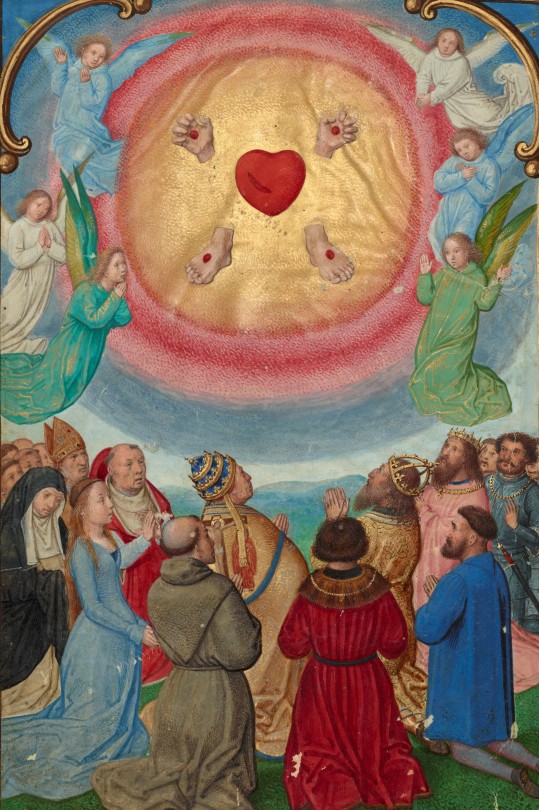
the five sacred wounds of christ
in the "prayer book of cardinal albrecht of brandenburg", c. 1525-1530, illuminated by femish artist simon bening
source: Los Angeles, J. Paul Getty Museum, Ms. Ludwig IX 19, fol. 335v
#illuminated manuscripts#christian iconography#christ as a heart#side wound#five holy wounds#heart#simon bening#16th century#illuminations#limbs
80 notes
·
View notes
Text
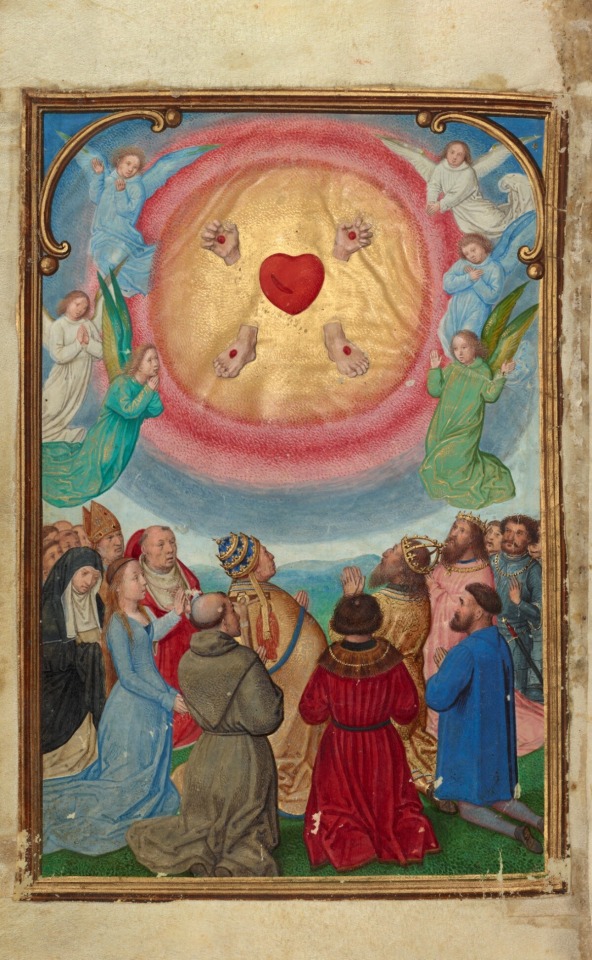
The Worship of the Five Wounds in the Prayer Book of Cardinal Albrecht of Brandenburg
Simon Bening, ca. 1525–30,
Getty Museum, Ms. Ludwig IX 19, fol. 335v
The wounds of Christ, who clearly suffered a crucifixion can be seen on the disembodied limbs. A group of angels, people representing social classes (kings, clergy, aristocrats).
#art history#history#art#european art#medieval#medieval art#christian art#middle ages#dark ages#illuminated manuscript#medieval manuscripts#manuscript#crucifix#catholic art#religious art#death
19 notes
·
View notes
Text
The Uncertain Origins of Lilith
This is a response to Trae Dorn's claims on their podcast and on Tiktok about the origins of Lilith, which I believe to be wrong. For context, listen to their podcast and read/watch their Tiktoks and Tumblr posts.
My base claim here is that there is a lot of scholarly discourse as to the origins of Lilith, whether she was, in Judaism, originally a singular figure or just a type of spirit, and whether the idea of her as a singular figure is exclusive to Judaism.
Furthermore, we absolutely can't just say all of this "misinformation" originated on Tiktok. Tiktok, like old Tumblr, is of course an absolute mess spiritually. Tumblr's the home of Mesperyian, and numerous cults have originated on Tiktok. So I'm not trying to defend Tiktok here, I'm just against saying with certainty that nobody but Jewish people may believe in her. And I mean to show evidence of older origins of people believing her to be a separate goddess.
First of all, it's important to note that Jewish mythology does have its own night spirits syncretous with "lilu", Lilin (Hebrew: לילין) that are mentioned in the Syriac Apocalypse of Baruch, with these annotations by translator R.H. Charles. (read original)
Lelioto. These are the Lilin (לילין)) from the singular Lilith לִילִית. Male and female demons named Lil and Lilit belong to Assyrian and Babylonian demonology. They were thought, as were also the Lilin (Shabbath, 1516), to attack men and women in their sleep (Lenormant, La Magie, p. 36). The Lilith, or night demon, is mentioned in Isa. xxxiv. 14, along with the satyr 'שָׂעַיר
The Lilin, according to the Talmud, were female demons corresponding to the Shedim or male demons. They were partly the offspring (Erub, 18b ; Beresh, 42) of Adam and Lilith, Adam's first wife, a demon, and partly wore derived from the generation that God dispersed (Gen. xi.), for God (Jalkut Shim., Beresh. 62) transformed that generation into Shedim, Ruchin, and Lilin. These Lilin inhabited desert places. They were said to kill children. They have been compared with the Lamiæ and Striges ; όνοκένταυροι. is the LXX. rendering of the word in Isa. xxxiv. 14.
However, this 1930 magazine article by Maximilian Rudwin says "The Hebrew word lilin is not a true plural of lilith. We would expect lilitim or lilitos as a plural. The word is in reality the masculine counterpart of lilith and denotes a male night-monster." Which makes it seem like this isn't plural and is a singular male deity.
What these two sources assert checks out with this Jewish Encyclopedia entry on the same source text.
Of the three Assyrian demons Lilu, Lilit, and Ardat Lilit, the second is referred to in Isa. xxxiv. 14. Schrader ("Jahrb. für Protestantische Theologie," i. 128) takes Lilith to be a goddess of the night; she is said to have been worshiped by the Jewish exiles in Babylon (Levy, in "Z. D. M. G." ix. 470, 484). Sayce ("Hibbert Lectures," pp. 145 et seq.), Fossey ("La Magie Assyrienne," pp. 37 et seq.), and others think that "Lilith" is not connected with the Hebrew "layil" (night), but that it is the name of a demon of the storm, and this view is supported by the cuneiform inscriptions quoted by them.
Cited are Emil G. Hirsch, Solomon Schechter, and Ludwig Blau, all of whom are respected authorities on the subject. Lilu, Lilit, and Ardat Lilit are apparently separate beings, Lilit being a goddess of the night.
And what of the protective prayer bowls of Sassanid Babylon? Lilit and Lilith, separate individual males and female demons, apparently suddenly becoming separate beings during Jewish exile in Babylon. But at this point, they don't seem to have been known as the being who wed Adam before Eve, so why did nearly every Jewish house have one of these prayer bowls, and did the idea spring up out of nowhere? And, if Lilith is purely Jewish, why did gentile Babylonians also ward her off with prayer bowls?
All this to say, we can't even definitively say they were only a class of beings and never individual deities.
As you know, it's very debated within Judaism whether Lilith as a singular entity, as the first wife of Adam even exists. Rabbis Maimonides (1138–1204) and Menachem Meiri (1249–1315) have said she does not. Certainly, there is a precedent of lilin as some type of supernatural entity in Judaism, but that's all we can say for sure.
Also, this 1919 copy of Pirke Aboth, equates the demons "mazzikin" with shedim and lilin, and acknowledges their origin as Assyrio-Babylonian. "this is the most general term for them, though various other grades of them are mentioned in the Talmud and kindred writings : shedim = "evil genii," an Assyrio-Bab. loan-word ; lilin, probably evil spirits of the night, also from the Assyrio-Bab."
What do we know for sure? We know the textual basis from which the notion of Lilith as a wife of Adam supposedly arose. We know that rabbis, as a whole, (of course) do not agree on whether this is a strong enough textual basis, or if this is something picked up by Jewish exiles in Babylon. We cannot say if Lilith, as an individual deity, existed in Mesopotamian mythology.
Before we get into the Epic of Gilgamesh business, I've got to say, I take issue with the confidence with which you make these assertions. You admit you are not a scholar. Yet you just keep saying "clearly" when it's not at all clear.
You say ki-sikil-lil-la-ke is totally unlike Jewish Lilith, which is verifiably false. Again, from the Jewish Encyclopedia:
"The superstitions regarding her and her nefarious doings were, with other superstitions, disseminated more and more among the mass of the Jewish people. She becomes a nocturnal demon, flying about in the form of a night-owl and stealing children.."
Lilith is capable of turning into a night bird in many variations of the legend. Yet you sort of derisively mock the interpretation of ki-sikil-lil-la-ke being Lilith, saying it "could literally mean owl", as if that's supposed to disprove anything. In Isaiah 34, a prophecy regarding the fate of Edom, the name "lilith" is associated with owls.
34:14 "And shall-meet wildcats with jackals
the goat he-calls his- fellow
lilit (lilith) she-rests and she-finds rest
34:15 there she-shall-nest the great-owl, and she-lays-(eggs), and she-hatches, and she-gathers under her-shadow:
hawks [kites, gledes] also they-gather, every one with its mate.
There's also Songs of the Sage. For more on Lilith and the association with owls and other night birds, this bit on Wikipedia provides a nice directory.
In the "Inanna and the Huluppu Tree", which is where the "lilitu" is purported to have first verifiably appeared, the young goddess Inanna caring for the Huluppu tree in her garden. She cries, because a Zu bird, and serpent "who knows no charm", and a lilutu have made the tree their home. Her brother Gilgamesh then slays the serpent, and the lilitu and the Zu bird flee. In a hymn about the origins of Inanna, she is taken to Kur (the Sumerian underworld) to taste the fruit of a tree that grows there, which reveals to her all the secrets of sex.
This parallels 13th century-onward Jewish (and Christian) tellings of Lilith
According to the Revelations of St. John, it was Samael or Satan,
who, disguised as a serpent, tempted Eve to disobey the Lord by
eating of the forbidden fruit and thus brought upon herself and her husband the wrath of their Creator. A certain Christian tradition identifies the serpent of the Garden of Eden not with Samael or Satan but with Lilith, who thus was the main instigator in the fall of our common ancestors. Dante Gabriel Rossetti, in his famous poem "Eden Bower," follows this later tradition in ascribing the temptation in Eden to this serpent woman Lilith. (source)
In Mandaeism, she's considered to represent the branches of a tree with other figures that form other parts of the tree, which you can see in the (honestly difficult to find and download) A Charm against Demons of Time by Christa Müller-Kessler. Lilith or liliths are referenced in Ginza Rabba and Qolasta as residing in the World of Darkness.
In Lilith's Cave- Jewish Tales of the Supernatural compiled by Howard Schwartz, you can see that accounts of Lilith as Asmodeus' Queen grew to include legends about another world, a world which existed side by side with this one. Yenne Velt is Yiddish for this described "Other World".
And as you well know, Lilith is commonly associated with sex. All these parallels are apparent.
Did Kramer "fuck up"? Scholars do not know. Sure, some contest it, but that isn't thewidely held opinion. You constantly calling it a "mistranslation" is giving me hives. Just stop! Why do you keep calling it a mistranslation?
(Regarding the Burney relief, I'm not going to try and claim that's Lilith. It could be, it fits- wings, the animals, the connection to Inanna- but there's just no evidence, and without evidence, trying to claim anything is ridiculous.)
Something else that's going to give me scurvy is you insisting it wasn't a singular goddess, but a whole class of beings; as if it cannot have been both! Religion and history are funny like that- ideas change. Beelzebub, once god of the Philistines, becomes a demon, and then Satan himself. Pegasus is one being, yet we call every winged horse a pegasus. Zeus and Hades- are they brothers, or are they different aspects of the same deity? Is Persephone the same as Despoina? Who are her parents? Are the Eumenides born of Ouranos' blood, or are they daughters of Hades and Nyx, Hades and Persephone, Euronymè and Cronus, or Euronymè and Phorkys? Are gorgons a type of being, or are Stheno, Euryale, and Medusa the only ones, and "gorgon" is just their title?
Lastly.. it's just weird how you talk about people who worship Lilith as a goddess and their experiences. You're like "the thing called Lilith is not a goddess, so if you are dealing with what you believe to be a goddess either they are not Lilith... maybe it's not a goddess, maybe... you've got all these legends about things called Lilitu.. just saying", implying it to be some nefarious pretender. What is a goddess? What is a demon? Who are you to say?
And of course, yes, I agree, always be careful when dealing with the religion of real life people. Don't bother Jewish people about this, they get enough trouble. But there will never be clear answers to these questions of faith. Your god might be somebody's demon. I see a lot of people who work with Lucifer. Just be kind. And look at your primary sources.
Also look at this excellent video by Dr. Justin Sledge on the subject.
#lilith#witchblr#witchcraft#<- tagging for visibility#occult#I'm not a witch or religious btw just autistic#whispers of spoekelse
25 notes
·
View notes
Text
IX - Dovetailed
read it on the AO3 at https://archiveofourown.org/works/53474938
by flamingokid
He thought about his dream, how he’d wanted to hold Medic, cradle him against him and make him his own. How good to him he’d be if he could just figure out how to be good in the first place. Didn’t love start with the self, or something like that? But I don’t want to start at self love, I’m awful at self love. You sure seem to be the duck's guts at loving Ludwig, though!, his heart pointed out cheekily. Was going out of order an acceptable thing to do? Was that something people did?
Was it possible to be in love with someone first and learn to love yourself a little later? Was it too late to love himself, or anyone at all?
Words: 2105, Chapters: 2/15, Language: English
Series: Part 9 of Thou Giveth Fever - A Bushmedicine Story
Fandoms: Team Fortress 2
Rating: Mature
Warnings: No Archive Warnings Apply
Categories: M/M
Characters: Sniper (Team Fortress 2), Medic (Team Fortress 2), Soldier (Team Fortress 2), Scout (Team Fortress 2)
Relationships: Medic/Sniper (Team Fortress 2)
Additional Tags: Slow Burn, Mutual Pining, Angst, Teammates to Friends, Friends to Lovers, Emotional Repression
read it on the AO3 at https://archiveofourown.org/works/53474938
4 notes
·
View notes
Text

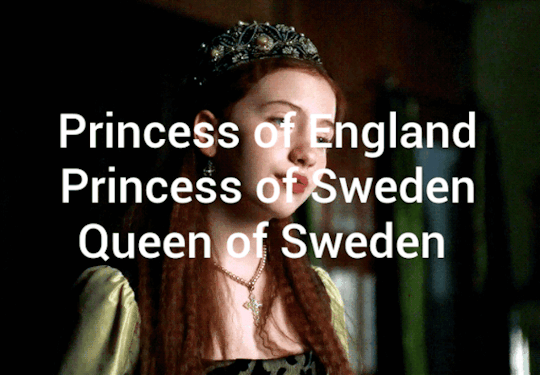

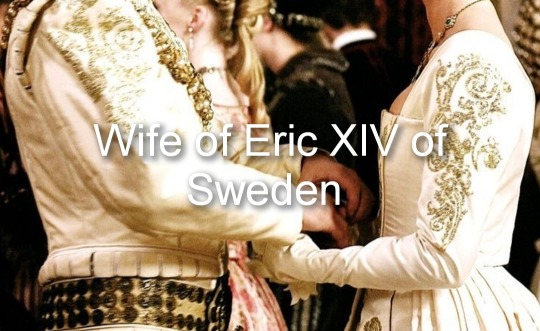

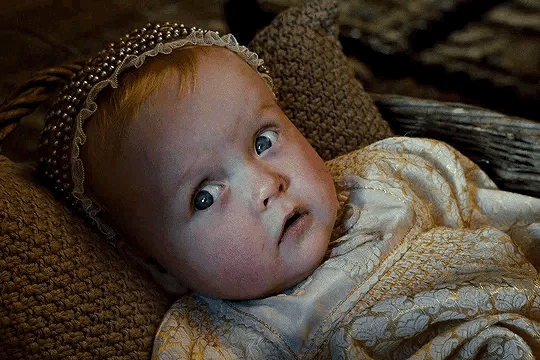
A happier life for Henry VIII's children. Part 2.
Elizabeth was the second daughter of King Henry VIII of England and his second wife Anne Boleyn. When the girl was 3 years old, the king annulled the marriage to her mother. Henry sent Anne to a convent and forbade Anne to communicate with her daughter, and soon afterward married Jane Seymour. She developed a close relationship with her stepmother, brother and sister. In 1547, her father died and Elizabeth was finally able to meet her mother. The meeting between mother and daughter after years of separation was very touching. When Anne saw Elizabeth, she could not believe that this beautiful girl was her daughter. First they cried for a long time in each other's arms, and then they sat up all night talking. They had a lot to say to each other. So their meetings became more and more frequent, and Edward allowed his father's second wife to stay with Elizabeth. In 1557 Edward VI began to look for worthy suitors from Protestant countries, for the hand of his sister, and his choice fell on the eldest son of the King of Sweden, Prince Eric. In the king's opinion, this marriage was to strengthen the sympathy of his subjects for him. In 1558, the princess became the wife of the heir to the Swedish crown, and 2 years later they became King and Queen of Sweden. It is said that at their first meeting the prince was so enchanted by her beauty that he lost the power of speech. Their married life was strong and passionate. For her husband Elizabeth became the most important confidante, with whom he discussed many problems. Six children were born in the marriage:
Gustav II of Sweden (1559 - 1605) Not interested in politics and never wanted to be king. Overthrown and killed by conspirators, including his own son Charles. Husband of Maria of Austria. Father of 4 children: Charles IX, Ludwig, Frederick, Elizabeth.
Anne of Sweden (1560 - 1634) Countess of East Friesland. At the age of 18 she married her cousin Enno III. The marriage was a happy one for both spouses. They became the parents of 9 children: Edzard III, Sabina, Agnes, Johann, Gustav, Rudolf, Christina, Sophia, Christian.
Magnus of Sweden(1561 - 1619) In 1582 he married his cousin Mary of England. They had 4 children: Nils, Katharina, Gunilla, Arnold. Magnus was widowed in 1590. And in 1592 he married his mistress Maria Oberg, but before that he received from his elder brother-king and his mother a permission to remarry. From his second wife he had 6 children: Magdalena, Sven, Hokon, Valdemar, Ingeborga, Svante.
Johan of Sweden(1565 - 1630) From childhood Johan was interested in navigation and discoveries. Therefore, he spent most of his life traveling, exploring lands not previously known. He was never married, however he recognized 3 children: Brita, Lars, Eric. And upon his death, he left each child a generous inheritance.
Cecily of Sweden(1567 - 1634) Macgravine of Baden-Rodemachern. In 1583 became the wife of Edward Fortunatus They became the parents of 5 children: Christoph III, Cecily, Elizabeth, Ottilia, Herman. In 1603, her husband died and Cecily was offered remarriage
Virginia of Sweden(1570 - 1606) Duchess of Holstein-Hottorp, wife of Johann Adolf. Virginia was older than her husband by 5 years, but despite this their marriage was happy. They had 7 children: Frederick III, Elisabeth, Conrad, Dorothea, Gedviga, Albrecht and Augusta. The Duchess died of childbirth fever a week after the birth of the last child. After the death of his wife, Johann lived the remaining 10 years until his death as a widower.
In 1568, the queen returned briefly to England for her mother's funeral. In 1577, King Eric XIV of Sweden died, and Elizabeth mourned her husband's death bitterly. But fortunately for Elizabeth, she had her children and grandchildren by her side, who became the meaning of her life. In addition, the Queen Dowager actively influenced the policies of her eldest son, King Gustav II. Gustav, weak-willed and indecisive, was not interested in ruling the state. In fact, the kingdom was ruled by Elizabeth, which did not please her daughter-in-law. Because of this, the two women often conflicted with each other. In March 1603, the Queen Dowager of Sweden died. She was buried in Uppsala Cathedral next to her husband. And 2 years later Gustav II was overthrown and killed. Her grandson Charles became the next king of Sweden.
Tumblr: History.Period Drama
#history#royal family#royalty#history au#au#royal#the tudors#henryviii#british royal family#anne boleyn#english history#tudors#elizabeth i#marytudor#edwardvi#jane seymour#catherine of aragon#britishmonarchy#royals#english royalty#the other boleyn girl#house of tudor#Tudor time
4 notes
·
View notes
Text
Worst Fire Emblem Parent Tournament Poll: Round 1 Masterpost


Hello everyone, after a week these are our contenders for the tournament!
Out of all of them, who will prove to be the most rotten parent in all of Fire Emblem? That's up to you to decide!
Round 1 Matches
Darin vs Anankos (Body)
Lima IV vs Silas
Hel vs Xander
Quan vs Niles
Sonia vs Sombron
Jeralt vs Garon (fake)
Kaden vs Sumeragi
Zephia vs Jedah
Rhea vs Volkhard von Arundel
Sothis vs Ashnard
Chrom, Emmeryn and Lissa's father vs Grima
Tharja vs Gustav (Heroes)
Eldigan vs Nowi
Saizo vs Garcia
Validar vs Hinata
Keaton vs Jakob
Hayato vs Ryoma
Subaki vs Mycen
Lonato vs Hilda (FE4)
Matthias Gautier vs Gilbert Dominic
Azama vs Leo
Rudolf vs Hyacinth
Rufus Blaiddyd vs Grégoire von Varley
Benny vs Garon (real)
Ionius IX vs Ethlyn
Hellene vs Azura
Corrin vs Ludwig von Aegir
Laslow vs Gunter
Naga vs Kaze
Arthur vs Takumi
Odin Dark vs Nergal
Desmond vs Eremiya
38 notes
·
View notes
Text
Khám Phá Đất Nước Của Trí Tuệ - Du Học Đức

I. Lịch sử nước đức
Lịch sử của nước Đức rất phong phú và đa dạng, bắt đầu từ thời kỳ tiền lịch sử với sự hiện diện của các bộ tộc Germanic. Dưới đây là một cái nhìn tổng quan về lịch sử của Đức qua các giai đoạn chính:
1. Thời kỳ tiền lịch sử: Khu vực của nước Đức ngày nay từng là một phần của các bộ tộc Germanic như Quadi, Marcomanni, và Teutons. Các bộ tộc này có ảnh hưởng sâu rộng đến văn hóa và lịch sử của vùng này.
2. Thời Trung cổ và Đế quốc La Mã Sacrusa: Sau khi Đế quốc La Mã sụp đổ, các bộ tộc Germanic nắm quyền và hình thành các quốc gia và lãnh thổ riêng của họ. Trong thế kỷ IX, Otto I của Đế quốc Sacrusa (còn gọi là Đế quốc La Mã Thần thánh) thống nhất một phần lớn của Đức hiện đại và trở thành Hoàng đế.
3. Thời kỳ Trung cổ muộn và Thời kỳ phục hưng (1400-1600): Các quốc gia và vương quốc nhỏ hình thành và chiến đấu với nhau để giành quyền kiểm soát. Trong giai đoạn này, phong trào cải cách của Martin Luther đã bắt đầu, dẫn đến sự chia rẽ tôn giáo và các cuộc chiến tranh tôn giáo, đặc biệt là Chiến tranh Ba mươi Năm.
4. Thời kỳ cổ điển và Thời kỳ đế chế (1700-1806): Phong trào cải cách và sự phát triển kinh tế đã tạo điều kiện cho sự mở rộng của các quốc gia như Prussia và Áo. Trong giai đoạn này, Frederich II của Prussia, hay còn được gọi là Frederich Đại đế, đã thực hiện các biện pháp cải cách và mở rộng lãnh thổ.
5. Thế chiến I và Thế chiến II: Đức đóng một vai trò quan trọng trong cả hai cuộc chiến tranh thế giới, với sự lên nắm quyền của Đảng Quốc xã dưới sự lãnh đạo của Adolf Hitler trong Thế chiến II, dẫn đến các hậu quả đại trà đối với đất nước và toàn cầu.
6. Sau Thế chiến II và sự thống nhất (1945-1990): Đức đã chia cắt thành hai phần, với Cộng hòa Liên bang Đức (Tây Đức) và Cộng hòa Dân chủ Đức (Đông Đức). Việc thống nhất Đức vào năm 1990 đã làm thay đổi bức tranh chính trị của châu Âu.
7. Hiện đại: Sau thống nhất, Đức đã trở thành một trong những quốc gia mạnh mẽ và ảnh hưởng nhất châu Âu, là thành viên của Liên minh châu Âu và NATO, đồng thời là một trong những nền kinh tế lớn nhất thế giới.
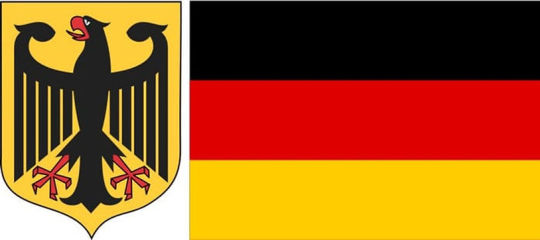
II. Biểu tượng nước đức
Nước Đức có nhiều biểu tượng quan trọng, bao gồm cả biểu tượng quốc gia và các biểu tượng văn hóa, lịch sử. Dưới đây là một số biểu tượng nước Đức đặc trưng:
1. Cờ Đức: Cờ Đức có ba dải ngang màu đen, đỏ và vàng. Cờ này đã trở thành biểu tượng quốc gia của Đức từ khi thống nhất năm 1871 và được sử dụng cho cả Đông và Tây Đức sau khi nước này thống nhất lại vào năm 1990.
2. Huy hiệu liên bang Đức: Huy hiệu liên bang Đức bao gồm một con đại bàng màu vàng trên nền màu đen đặt trên một hình tròn màu đỏ. Đây là biểu tượng chính thức của chính phủ liên bang Đức.
3. Bức tượng đại bàng: Đại bàng là một biểu tượng quan trọng của Đức, thường được sử dụng để đại diện cho sức mạnh và uy quyền. Nó thường được sử dụng trong nghệ thuật, kiến trúc và cả trong huy hiệu của một số tỉnh.
4. Các công trình kiến trúc lịch sử: Đức có nhiều công trình kiến trúc lịch sử nổi tiếng như Cung điện Reichstag ở Berlin, Lâu đài Neuschwanstein ở Bayern, Cổng Brandenburg ở Berlin, và nhiều nhà thờ cổ và lâu đài khác.
5. Các biểu tượng văn hóa: Nước Đức cũng có nhiều biểu tượng văn hóa nổi tiếng như bia Oktoberfest, đồng hồ Cuckoo, những bài hát dân ca và các câu chuyện cổ tích như câu chuyện của anh em Grimm.

III. Diện tích nước đức

IV. Văn hóa nước đức
Văn hóa của Đức là một phần quan trọng của di sản văn hóa thế giới, đóng góp đa dạng và giàu có vào sự phát triển của nền văn hóa toàn cầu. Dưới đây là một số điểm nổi bật của văn hóa nước Đức:
1. Ngôn ngữ và văn học: Tiếng Đức là ngôn ngữ chính thức và được nói rộng rãi ở Đức. Văn học Đức có một lịch sử lâu dài và phong phú, từ các tác phẩm của Goethe, Schiller, Kafka, Nietzsche đến các tác phẩm hiện đại của Günter Grass, Hermann Hesse, và Thomas Mann.
2. Âm nhạc: Đức là quê hương của nhiều nhà soạn nhạc và nhạc sĩ nổi tiếng như Ludwig van Beethoven, Johann Sebastian Bach, Wolfgang Amadeus Mozart (người sống tại thành phố Salzburg, nay thuộc nước Áo, nhưng sinh ra ở Leipzig, Đức), và Richard Wagner. Nước Đức cũng có một truyền thống dày đặc trong các thể loại như nhạc cổ điển, nhạc dân gian và nhạc điện tử.
3. Kiến trúc và nghệ thuật: Đức có một lịch sử kiến trúc và nghệ thuật đa dạng, từ các công trình kiến trúc cổ điển như lâu đài và nhà thờ Gothic cho đến các trường phái nghệ thuật hiện đại như Bauhaus và dòng chảy hậu cảm biến đổi.
4. Bia và lễ hội: Đức nổi tiếng với nền văn hóa bia của mình. Oktoberfest ở Munich là một trong những lễ hội bia nổi tiếng nhất thế giới, thu hút hàng triệu du khách mỗi năm. Ngoài ra, còn có các lễ hội bia khác và các lễ hội dân gian khác trên khắp Đức.
5. Thể thao: Bóng đá là một phần quan trọng của văn hóa thể thao ở Đức, với Bundesliga (hạng đấu cao nhất) được coi là một trong những giải đấu hàng đầu thế giới. Các môn thể thao khác như bóng rổ, bóng chuyền và điền kinh cũng rất phổ biến ở Đức.
6. Văn hóa ẩm thực: Ẩm thực Đức đa dạng và phong phú, từ các món ăn truyền thống như Bratwurst (xúc xích chiên) và Sauerkraut (bắp cải chua) đến các món ăn đặc trưng của các vùng địa lý khác nhau trong nước.

V. Kết luận
Đức không chỉ là một điểm đến của công nghệ và kinh tế mà còn là một điểm đến tinh tế và đầy màu sắc. Nếu bạn cũng bị cuốn hút bởi những nét văn hoá nước Đức đa dạng và muốn trải nghiệm nền văn hoá này, bạn muốn du học Đức, du học nghề Đức nhưng chưa biết phải bắt đầu từ đâu? Liên hệ ngay với Clevermann để được tư vấn miễn phí bởi đội ngũ chuyên gia.
2 notes
·
View notes
Text

David in Prayer from a Book of Hours (Ms. Ludwig IX 6 (83.ML.102)), French, ca. 1440-1450

3 notes
·
View notes
Text

Ms. Ludwig IX 3 (83.ML.99), fol. 76 | A hunting scene | Getty Museum
20 notes
·
View notes
Text

Farmer in his linen shirt and rolled down split hose.
Ms. Ludwig IX 5, folio 6. Early 15th century, French.
4 notes
·
View notes